Walter Klinefelter in Portrait and Profile, Part 1
Walter Klinefelter was a name I knew very early in my Sherlockian life. His book, Sherlock Holmes in Portrait and Profile, was one of the first that I bought. Starrett had an introduction in that book which took up a happy space on my shelf, next to a copy of Doubleday’s The Complete Sherlock Holmes and the Pinnacle edition of Starrett’s The Private Life of Sherlock Holmes. At one time, that was my entire Sherlock Holmes book collection. As a poor college student, it was all I could afford.
Page mockup for Sherlock Holmes in Portrait and Profile. From the collection of the University of Minnesota’s Andersen Library.
Klinefelter has slipped in and out of my Sherlockian awareness ever since. He remained an enigmatic figure for decades, never coming fully into focus. I learned that he never attended a BSI dinner, although he had both an investiture (“The British Barque Sophy Anderson”) and the Two-Shilling Award. That alone was intriguing.
He was clearly a reticent fellow and did not leave a large public footprint. It's only been in the 10 or 15 years that more information about him has become easily available.
I recently set out to find more and answer some basic questions. What had he done to deserve BSI recognition? What was the extent of his connection with Starrett? And just what kind of fellow was Klinefelter anyway?
With the help of a few others, I have a better picture of the quiet country gentleman who seems never to have strayed far from home. Here, as best as I can reconstruct it, is a little about his life and how it intersects with that of Vincent Starrett. Many thanks up front to Julie and Al Rosenblatt (who interviewed Klinefelter in the 1980s), Harrison “Terry” and Linda Hunt, whose book Aboriginals is so often invaluable, and Jon Lellenberg’s BSI histories. Other sources will be noted along the way.
Introducing Walker Klinefelter
A rare newspaper story featuring Klinefelter from The York (Pa) Daily Record for May 6, 1974.
Klinefelter was born on his father’s Central Pennsylvania farm in 1899. It was, and to some extent still is, Pennsylvania Dutch Country, with Amish buggies a common sight. He attended public schools, started his college career at York County Academy (later York College), then shifted to Gettysburg College to earn a bachelor’s degree.
According to a brief biography in one of his later books, (Origins of Sherlock Holmes, Gasogene Publications, Bloomington, 1983.) Klinefelter “spent more than 30 years in the employ of the Commonwealth of Pennsylvania, first as a high school teacher and principal, then, after a brief stint at publishing, for 25 years with the Pennsylvania Liquor Control Board.”
He lived near his family farm in York County, Pa., for most of his life. His obituary noted that he had spent many years as a local fireman.
Klinefelter’s personal history is even more sparse. He was married twice, and outlived both of his wives. He had two daughters, two granddaughters and one great-grandson at the time of his death, in the summer of 1984. That’s about it.
The fact is that Klinefelter kept a very low profile—even in his own publications, as you’ll see.
Klinefelter, Starrett and Holmes
Klinefelter’s obituary from The York (Pa.) Dispatch, July 6, 1987.
Sherlock Holmes must have been a passion of his as early as the 1920s. He owned one of the original copies of Starrett’s pastiche, “The Unique Hamlet,” although it’s unclear whether he got it in 1920 or acquired it a little later. What is clear is that he was well versed in Holmes.
Indeed, Klinefelter was one of those who correctly completed Frank V. Morley’s Holmes-themed crossword puzzle, published in the May 3, 1934 issue of The Saturday Review of Literature. Completion of the puzzle was supposed to get you an invitation to the Baker Street Irregulars dinner, and it did for some men. (Women puzzle solvers did not get invited.) If Klinefelter received an invitation, his lifelong reluctance to travel outside of Central Pennsylvania indicates he would not have made the trek to New York.
Publishing got into his blood early in life. In the 1930’s, Klinefelter oversaw several small booklets including at least one involving Arthur Machen. There’s a listing at Worldcat.org, which shows that a booklet called Tom O’Bedlam and his Song by Machen was published in 1930. Perhaps it was a mutual interest in Machen that led him to search out Starrett? At any rate, he and Starrett were corresponding friends by the early 1930s, still addressing each other formally as Mr. Starrett and Mr. Klinefelter, according to letters now at the University of Minnesota’s Andersen Library.
I was surprised to learn that the one book Klinefelter wanted to publish was Starrett’s The Private Life of Sherlock Holmes. We will explore that more in a bit, but let’s take things chronologically, starting with a goose, and I’m not talking about “The Adventure of the Blue Carbuncle.”
All About Mother Goose
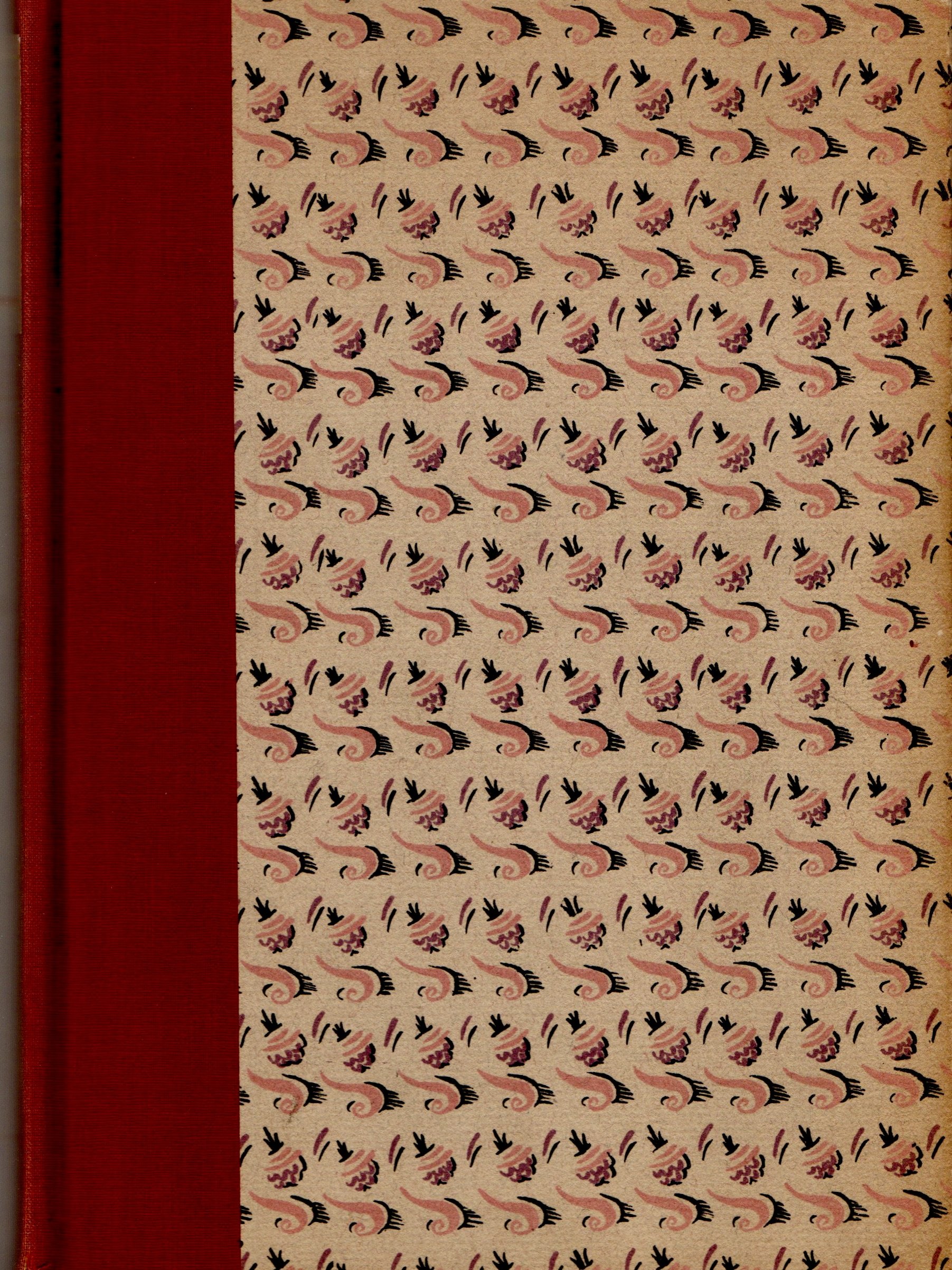

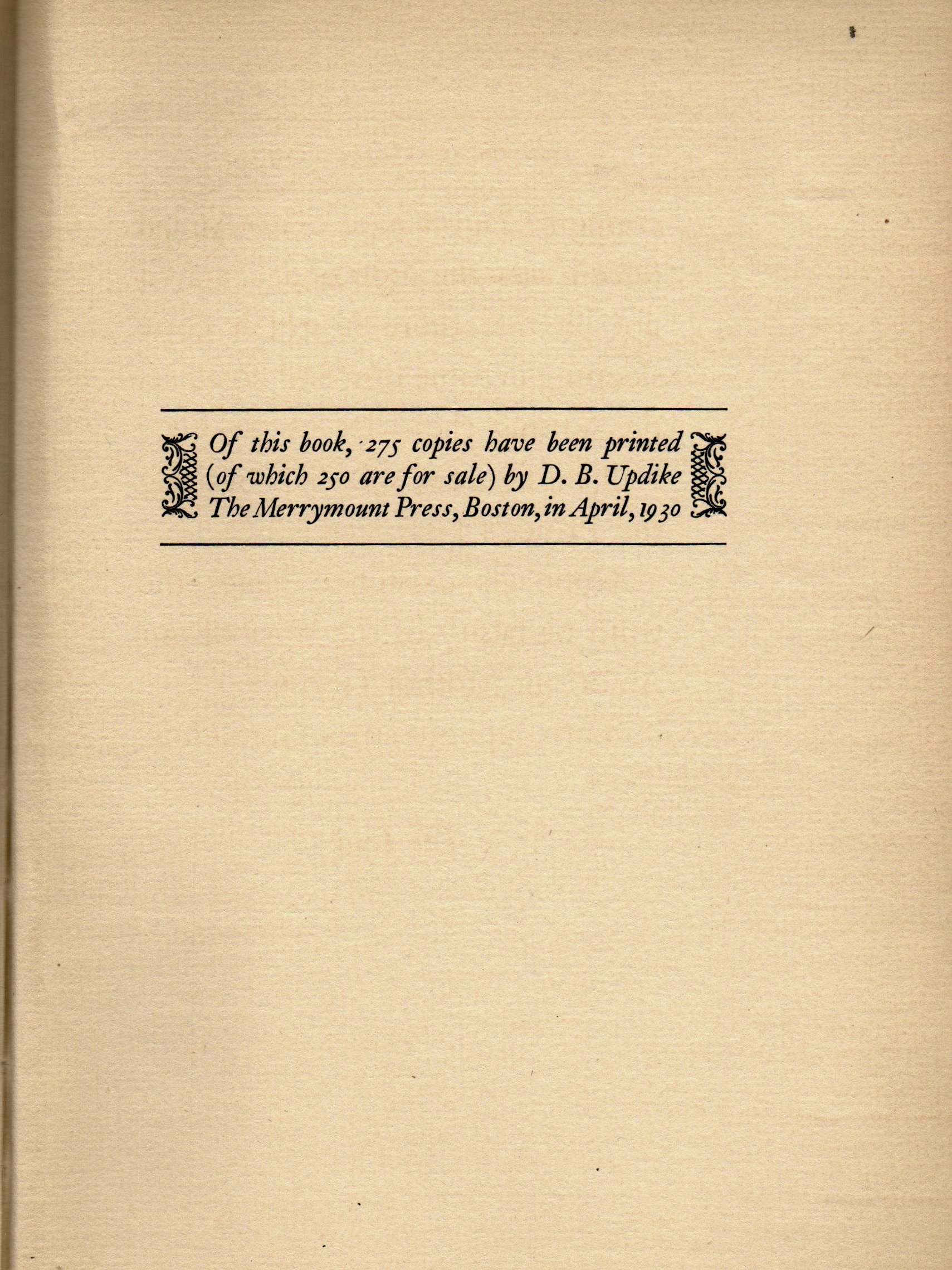

Starrett and Klinefelter first worked together on the publication of an essay about the origins of the fable teller known in Europe and North America as Mother Goose. “All About Mother Goose” was originally published in 1924 by the journal Forum. Klinefelter put it out between hard covers in a limited edition booklet over the name of The Apellicon Press in 1930. It is handsomely printed and was clearly a labor of love. There were 275 copies and (according to the limitations page) were sold through D.B. Updike at The Merrymount Press, Boston, in April 1930.
Curiously, Klinefelter’s name never appeared in the little publication. He also didn’t list the book in his own bibliography, the 1976 booklet, A Walter Klinefelter Biblio-List.
The listing for All About Mother Goose in Charles Honce’s 1941 Starrett bibliography. Klinefelter’s name is absent from this listing too.
My first clue for Klinefelter’s involvement was that Charles Honce noted the book came from Glen Rock, Pa. (where Klinefelter lived at the time) in his 1941 Starrett bibliography. Honce references it as “an Updike production,” referencing the Boston bookseller who might have also underwritten the booklet publishing costs.
Klinefelter & The Private Life of Sherlock Holmes
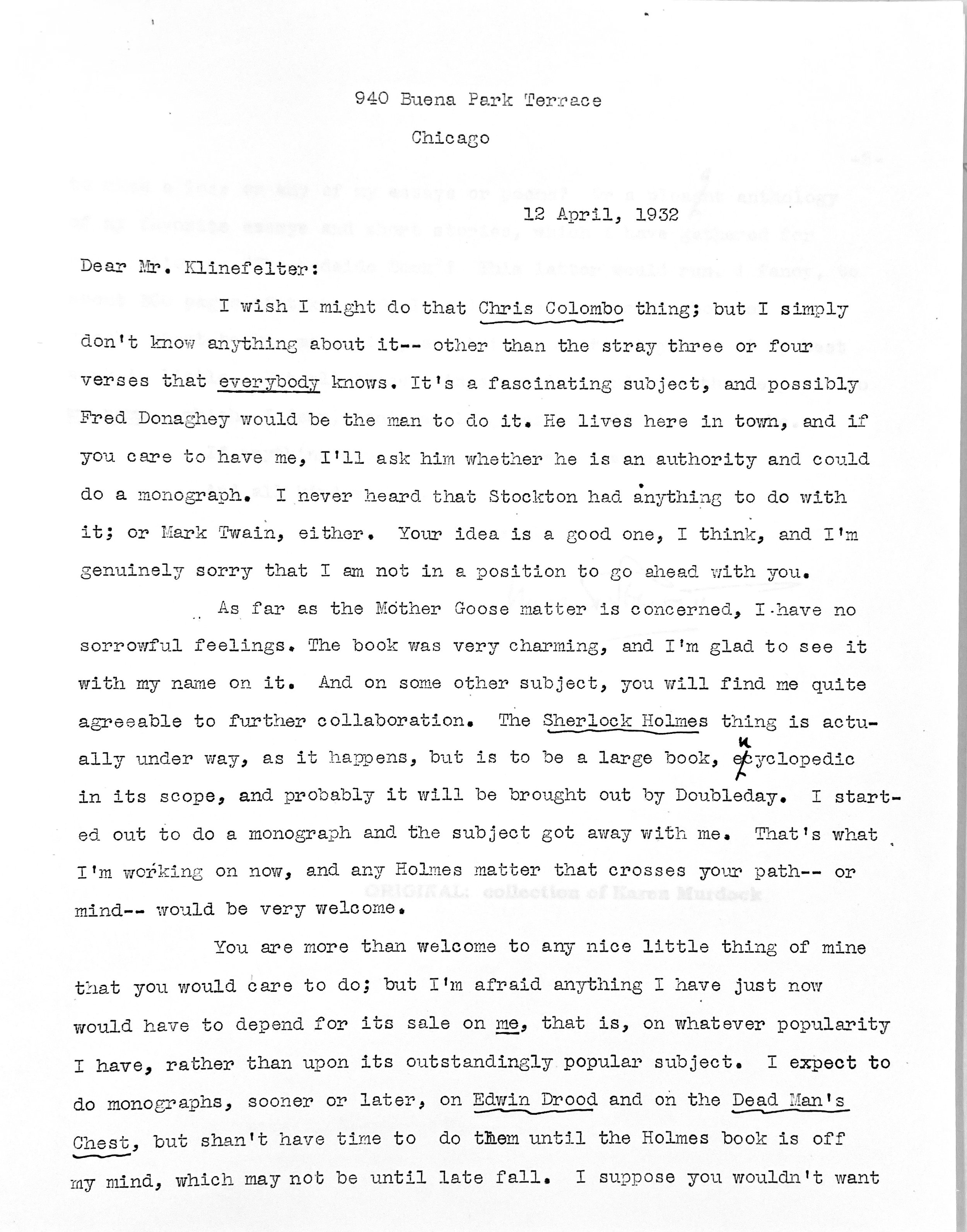
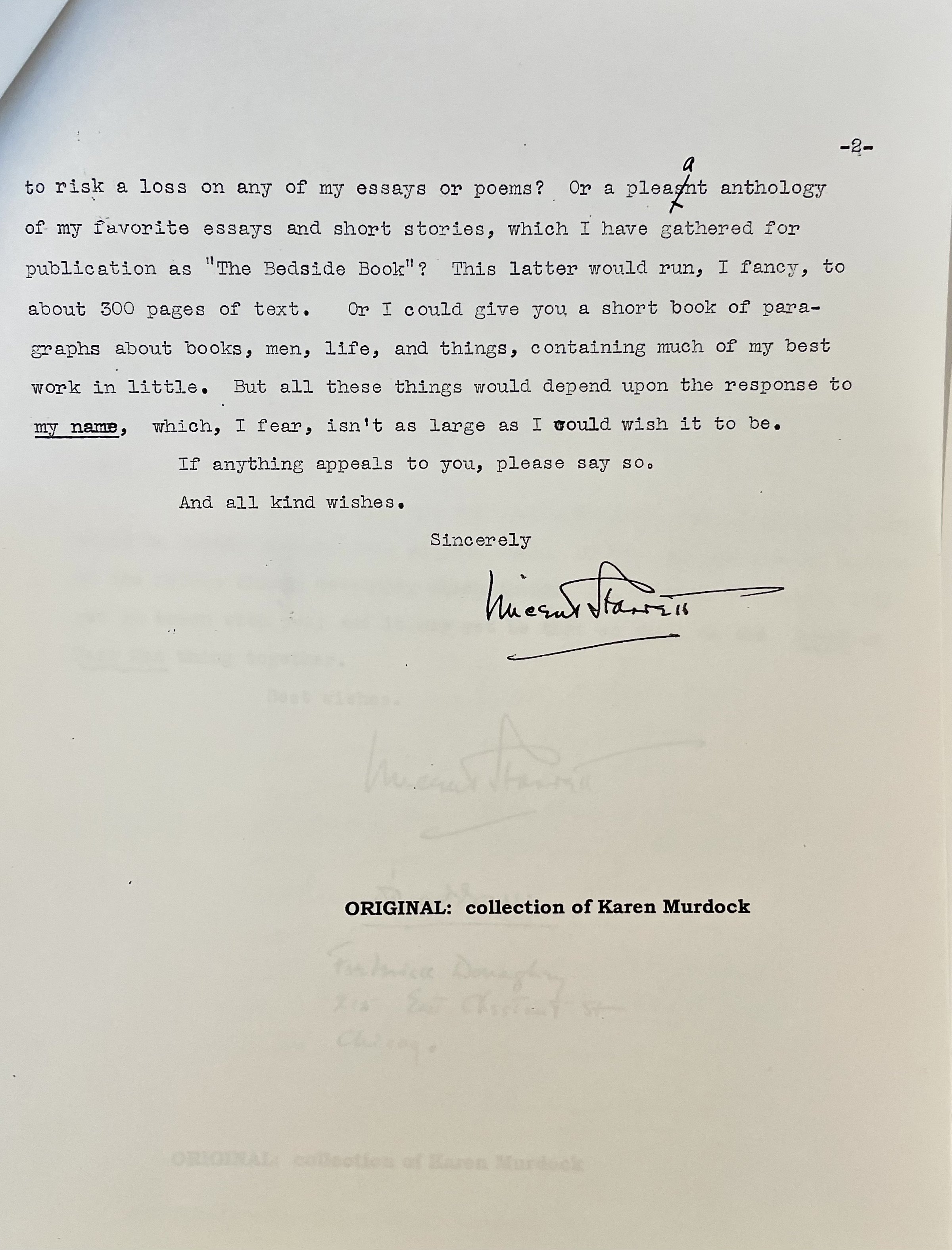
It was probably around this time that Starrett told Klinefelter that he was writing a book about another great literary legend: Sherlock Holmes. We do know that Starrett gave Klinefelter a detailed status report on the Holmes project in a Nov. 15, 1932 letter. (Copies of these letters are in the holdings of the University of Minnesota’s Anderson Library collection with the notation that the originals are owned by Karen Murdoch. Karen has generously given permission for their use.)
Starrett explained that Doubleday wanted to put off publication because of the Great Depression and that he feared contract negotiations with the publishing firm Putnam’s would cause additional delays.
“I shall want a first-rate advance in any case, etc. etc., etc. I simply can’t afford to run risks with this MS, as much time and effort have gone into it; and it is my magnum opus, to date. It must pay me, and pay me well,” he emphatically told Klinefelter. He then got down to basics.
In the event that you are to be given a chance at it—and I agree that it would be a smashing first book for anybody entering he publishing business—I should have to ask a cash advance (to be deducted from royalties, of course) of $1,000.00, and a contract calling for a flat 15 percent royalty on the retail price of the book. Also, the copyright would have to be in my name.
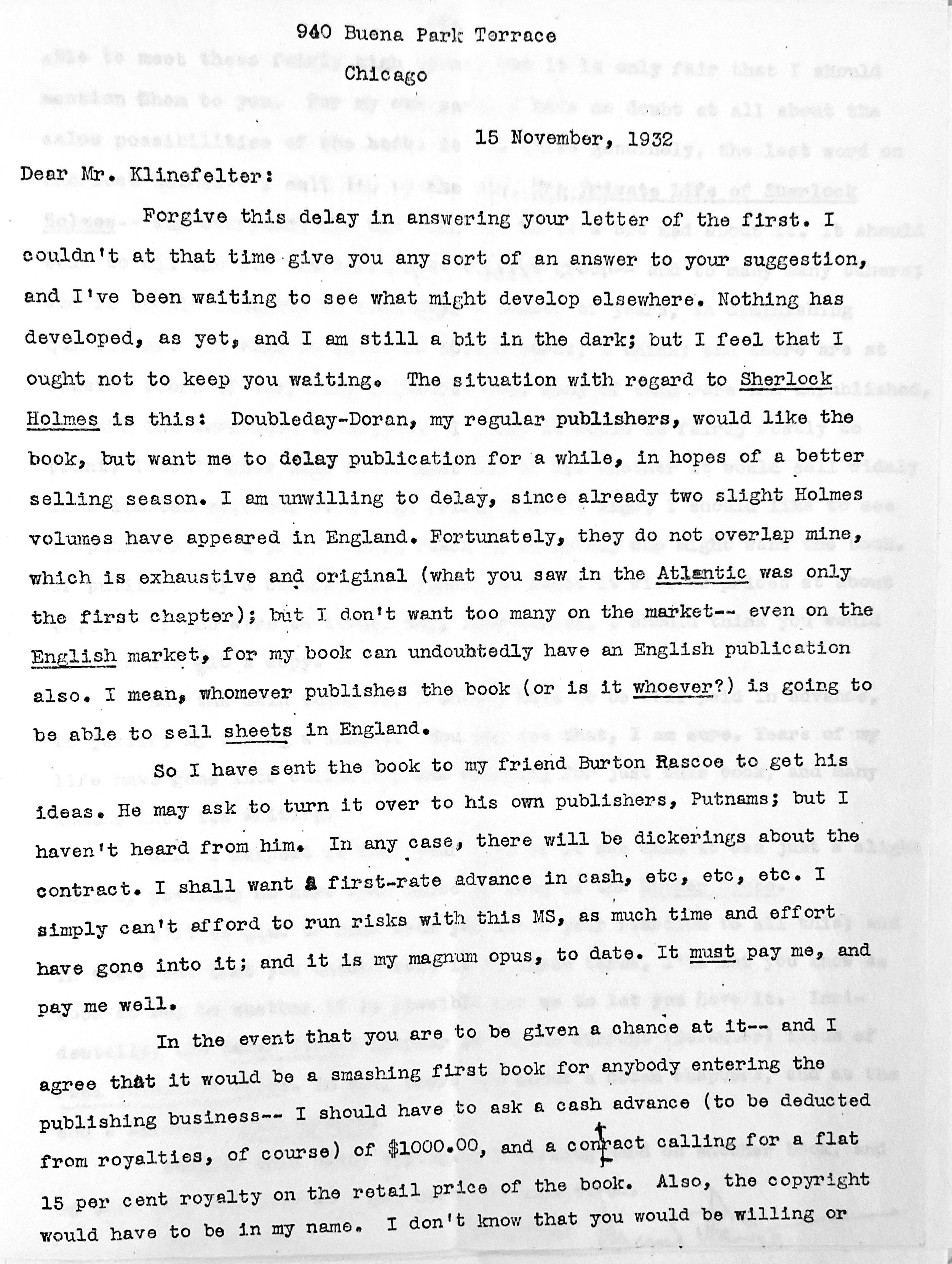
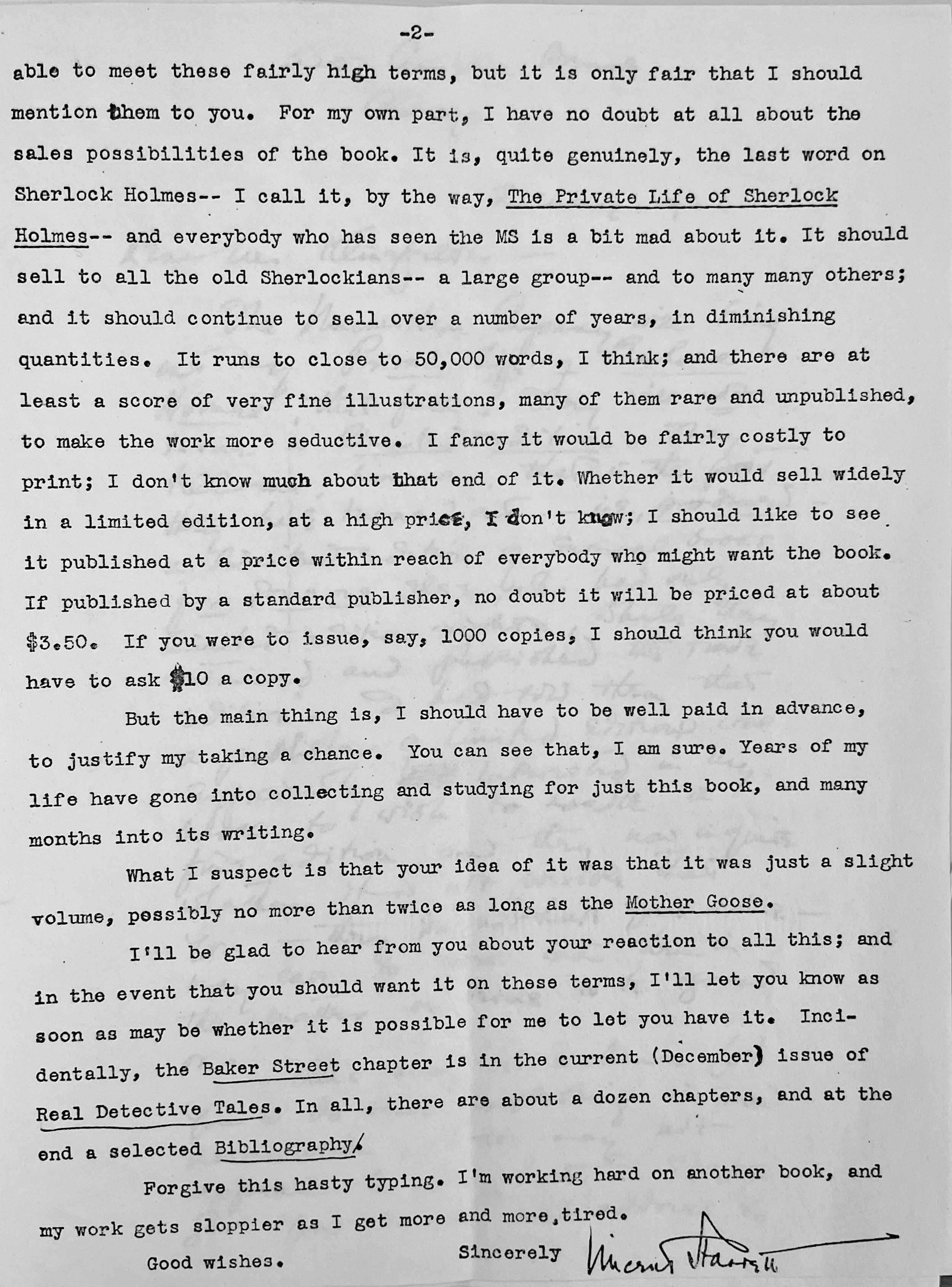
Starrett goes on to speculate that Klinefelter will likely not be able to meet these high demands and, “the main thing is, I should have to be paid in advance, to justify my taking a chance. You can see that, I am sure. Years of my life have gone into collecting and studying for just this book, and many months into its writing.”
Starrett explained that the manuscript was about 50,000 words long, and he suspected that Klinefelter was instead thinking it was a slim volume like Mother Goose, which ran to only 40 pages. The book’s word length and its 20 or so illustrations will make the book “fairly costly to print,” which for a small press would challenge Starrett’s hopes for a volume that would be “priced at about $3.50.”
Those fiscal realities were too much for the quiet man from Pennsylvania farm country. Klinefelter had to pass (Macmillan published Private Life in 1933), but he and Starrett remained on friendly terms.
I have done it again. This is going to take longer than I thought, so I’m splitting this in two parts. The second installment on Klinefelter will arrive next week. See you then.


